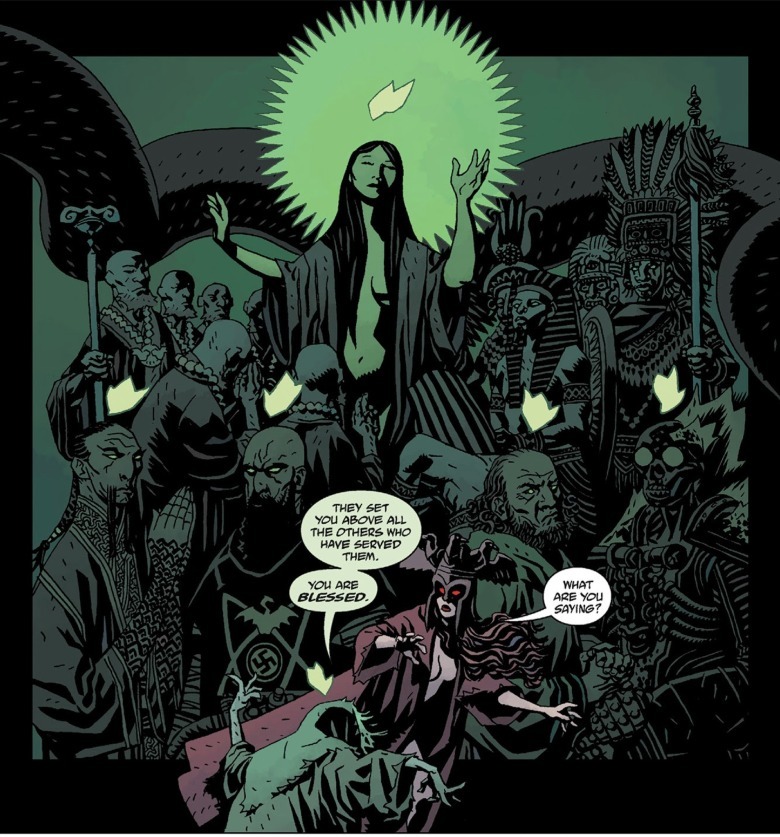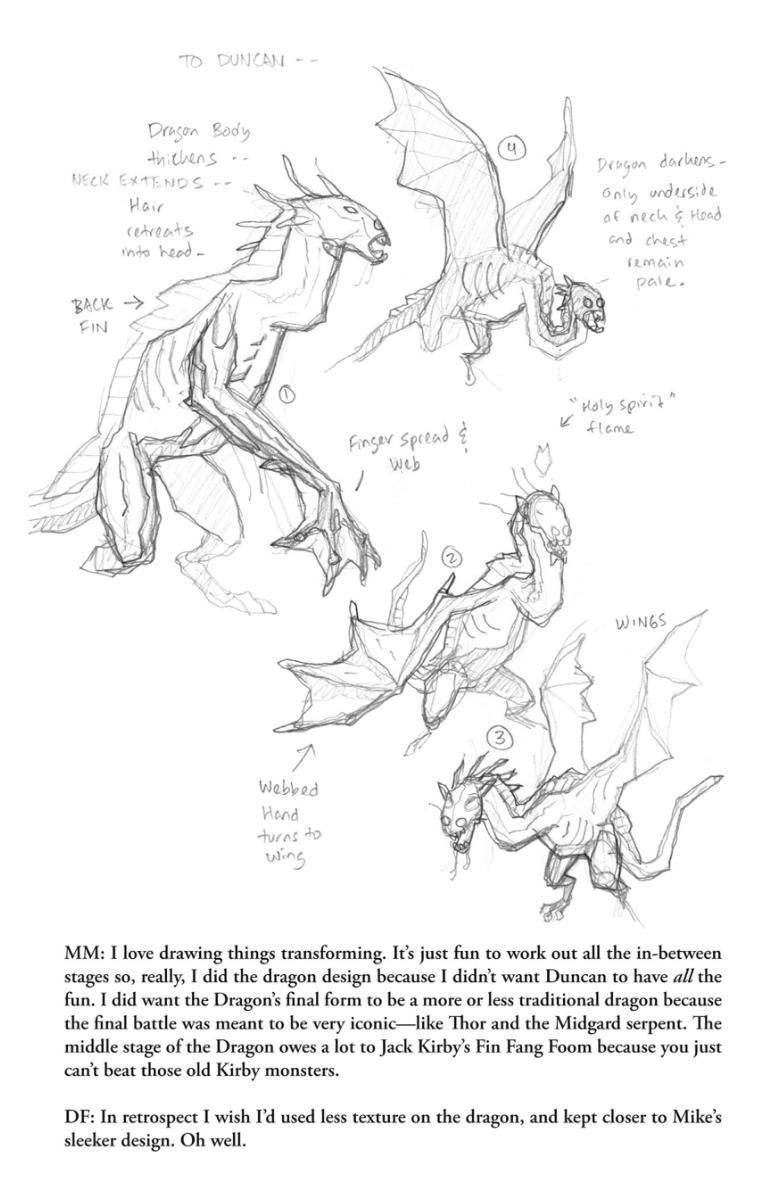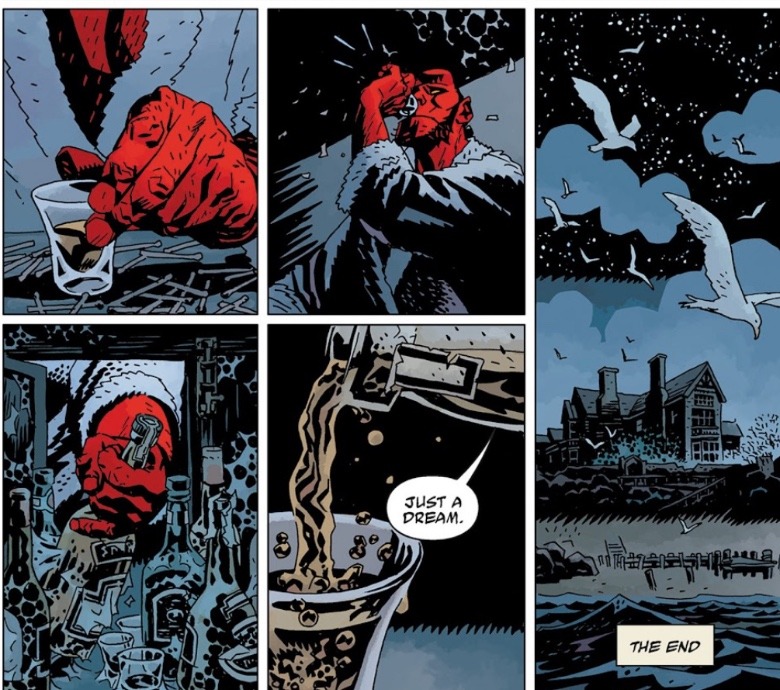
Since the first “Hellboy” story — “Seed of Destruction” — the primary evil of the setting has been the Ogdru Jahad, seven primordial dragons locked away in a cosmic prison. If they’re set free and return to Earth, it will unleash the apocalypse.
“The Wild Hunt” established that, before her defeat, Nimue had worshipped a “soul destroying black dragon.” Speaking to Comic Book Resources in 2011, Mignola said he spent a lot of time trying to pin down the ending of “The Storm and the Fury.” He then realized he could use Nimue’s backstory to bring back the Ogdru Jahad, thereby tying the beginning and ending of “Hellboy” together (while also ditching Nimue’s annoying-to-draw helmet).
During “The Storm and the Fury,” as Nimue readies for conquest, one of her witch followers appears and tells her plans have changed; her masters have decided she will become their vessel. Nimue is aghast, unwilling to give herself up, but it doesn’t matter.
When Hellboy reaches the top of Nimue’s tower, the Blood Queen isn’t there anymore. Instead, it’s the Ogdru Jahad speaking through Nimue and as they fight Hellboy, they gradually transform their human vessel into a dragon. (See Mignola’s concept art of that form below.)
One of the ravens, embodying Nimue’s horror at the monster she’s become, turns into a sword and falls into Hellboy’s hand. By wielding that sword, he defeats the Blood Queen and holds back the tide of the Ogdru Jahad.
While a late addition to Hellboy’s story, Nimue becomes one of his clearest foils. In “Darkness Calls,” the witches of England first ask Hellboy to be their king. Being Hellboy, he tells them to take a hike, so Gruagach says they should revive Nimue instead. Both characters are also uniquely coded with the color red. “Hellboy” colorist Dave Stewart uses blue and yellow-tinted backgrounds throughout this trilogy, which means that Hellboy is always the center of your attention; there’s no other red in the panels except his bright ruby red skin. Until Nimue, true to her title as the Queen of Blood, enters and is bathed in red colors too.
This final draconic turn makes Nimue into an even better counterpart to Hellboy. They’re both harbingers of the apocalypse, and ones split between human and demon selves.
In “The Wild Hunt,” Hellboy learns he is more human than he knew. His father was the demon lord Azzael, yes, but his mother was a human witch descended from King Arthur, and so Hellboy is too. He’s both the Prince of Hell and the rightful King of England. If he chooses, he can lead the forces of the underworld against Nimue with a crown of flame upon his brow, or he can wield Excalibur and march the revived “noble dead” of England against her. He chooses neither, instead going into battle alone.
“Hellboy” has always been a story about destiny — and refusing it. Our hero was summoned to destroy the world, but he wants is to live in it. During this trilogy, Hellboy’s struggles have a more mundane form. In “The Mole,” a prologue to “Darkness Calls,” he dreams of his horned demon self erupting out of a mole on his hand. When he wakes up, he pours himself some drinks.
He keeps drinking until “The Storm and the Fury” — Hellboy has spent years being told he’ll become a monster whether he wants to or not, and to cope with his fears he’s surrendered himself to a different demon. Before he goes to face Nimue, he puts the bottle down. Until the very end, Hellboy chooses to be his own man and that man is a hero worthy of his royal lineage. After all, what is more classically heroic than slaying a dragon?




Leave a Reply